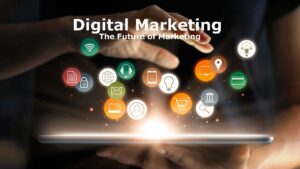If you’re not sure where the future is headed, here are a few technology trends that are likely to change the way we do business. We’ll discuss Adaptable technologies, Augmented reality, 5G, and Artificial intelligence. And we’ll take a look at 5G, which can change our lives forever. These technology trends are likely to impact every industry, from finance to healthcare. But what is in store for these industries?
Adaptable Technology
Adaptive technology is a growing trend in higher education. It provides a new way to interact with technology that makes it easier for people with disabilities to complete specific tasks. ACT Centers can help you identify whether you can benefit from adaptive technology. For more information, contact them. They will work with you to determine which technologies will help you achieve your goals. Adaptive technology trends are likely to continue to grow in the future, so make sure you keep up to date with the latest developments.
Artificial Intelligence
Artificial intelligence (AI) is the ability of machines to perform routine tasks and learn from experience. It will eventually replace humans, freeing them to do more important tasks. It is a disruptive technology, and its use will affect all aspects of our lives. Despite its potential benefits, AI could also pose potential threats. Those who are concerned about its potential risks should keep in mind that the technology will continue to evolve at a rapid pace.
In the near future, artificial intelligence promises to create tremendous opportunities for economic growth. According to a report published by PriceWaterhouseCoopers, AI could boost global GDP by $15.7 trillion by 2030. In China alone, artificial intelligence could boost GDP by $7 trillion. In North America and Northern Europe, the economic boost from AI could reach $13.7 trillion. By 2030, the technology could boost global GDP by 14 percent, a figure that is more than twice as high as today.
Governments need to focus on the broad goals of AI before cracking open its “black boxes.” While cracking open individual algorithms may improve privacy, it will limit innovation and make it difficult for companies to implement them. As a major driver of global economic growth, AI also raises concerns about bias and discrimination. To prevent discrimination and bias, governments should extend existing anti-discrimination laws to digital platforms. Not only will these measures protect consumers, but they will also boost public confidence in AI.
Augmented Reality
With the increasing popularity of augmented reality technology, the hype around it is set to grow even more. The future of this technology promises to provide more possibilities than we can currently imagine. In fact, AR could replace the smartphone as our primary connected device. Here are some technology trends in the industry:
AR games: With the popularity of Pokémon Go, augmented reality games can be highly competitive. They can create new forms of communication and social interaction. Similarly, augmented reality can improve and polish indoor navigation technologies. These new growth spaces are ripe for innovative companies who can utilize the latest technologies and create new applications. This article looks at augmented reality technology trends and how they might influence your business. Here are the top five technology trends in the AR market:
AR for education: One use for AR in education is in education. With AR, students can learn in a more immersive way, as opposed to traditional lecture and textbook methods. Case Western Reserve University and the Cleveland Clinic now offer 3D holographic anatomy programs for medical students. Students can even view virtual cadavers and the human body using Microsoft HoloLens, a virtual reality headset. Using AR in education has many benefits, including increased accessibility for people with disabilities.
More Reliable Wireless Services
For consumers, 5G technology is just around the corner. But for businesses, the future holds a lot of potential. As the world’s population grows older, the use of faster and more reliable wireless services will be crucial. In fact, 76 percent of survey respondents expect 5G to become commonplace in the next two years. At the same time, 56 percent of telecommunications companies are still in the architecture phase of developing their 5G network solutions. While larger service providers are more advanced in the development of 5G networks, smaller companies may struggle to gather resources and expertise.
While most mobile phones support 4G, a newer standard known as 5G will bring faster speeds. 5G will also have lower latency, more capacity, and more connectivity than ever before. Businesses will be able to maximize efficiency and productivity by implementing network slicing, which will allow them to deploy private 5G networks within public networks. This will increase efficiency and productivity while reducing costs. The technology is expected to be available in the next few years, making it a great time to start planning for your business’s 5G network.
In addition to consumer applications, 5G will enable ultrareliability and security. These qualities are essential to several key use cases within Industry 4.0. These scenarios include autonomous driving, remote control of critical infrastructures, and medical telesurgery. Increasingly, 5G infrastructure will be installed in public safety and government facilities due to the increasing need to communicate with first responders during emergencies. And these technologies will continue to evolve as we move into the future.
Distributed Cloud
With the recent release of Gartner’s Top Strategic Technology Trends for 2021, distributed cloud is widely hailed as the future of cloud computing. In the past, organizations that were hesitant to migrate to the public cloud have turned to hybrid clouds to get the services they need without taking on the hassle of private cloud ownership. But hybrid cloud solutions can be limiting to users and prevent them from fully leveraging the capabilities of their cloud providers.
In this way, the company can reach customers from dispersed locations, who require location-specific services. The technology is based on sharing processors, DRAM, and add-on components. Distributed clouds help businesses execute a unified cloud strategy while meeting the requirements of individual locations. And they’re faster than ever before! So, how do you get started with distributed clouds? Listed below are some key points to consider.
In the future, cities, utilities, telcos, and universities will purchase cloud substations. In this way, they’ll be able to build cloud infrastructure wherever needed and maintain regulatory compliance. This distributed cloud approach also reduces network failure risk, since services reside on local subnets. Thus, even when a system crashes, other servers can continue working uninterrupted. The advantages of distributed cloud are too numerous to ignore.
Blockchain Technology
Various industries are getting involved with blockchain technologies as they promise unimaginable traceability and security. Blockchain wallets can be a good example of this new technology in action. Consumers will be able to trace the history of their purchases. Additionally, blockchain technology can help companies manage their supply chains, and it will enable them to track the growth of their social networks. And the best part is that there is no need for any infrastructure development or prior experience.
BaaS, or Blockchain as a Service, allows businesses to experiment with the new technology without deploying the necessary infrastructure. Currently, only Microsoft and Amazon offer BaaS. But thousands of other Blockchain companies are adopting this new technology to help their customers experiment with blockchain. Here are the major technology trends for 2019 and 2020. BaaS: Blockchain as a Service: Integration of blockchain capabilities with core technologies is driving the adoption of blockchain in a number of industries.
The Internet of Things: The internet of things will play a huge role in the coming years. As it connects everyday objects with the internet, it will be possible for humans to interact with machines, such as refrigerators. Blockchain helps devices transfer data to private networks and create tamper-resistant archives. Blockchain is an important part of this technology because it allows users to safely share data and reduces the need for a third party. By eliminating the need for a third party to monitor transmissions, commands are passed through encrypted networks.
Internet of Things
The growth of the IoT has led to many exciting applications for smart devices. Wearable technology, autonomous cars and refrigerators that automatically reorder groceries are just a few examples of smart applications. In the manufacturing industry, systems can recognize when a component is defective before they come to a halt, and workpieces can automatically look for a free machine for the next step of the process. In addition, packages can be tracked seamlessly across multiple shipping stations. In addition, sensors and RFID tags are now being used to record operational information and enable rapid wireless data exchange.
Companies that use IoT will need to pivot their focus away from the newsworthy applications to focus on improving efficiency, cutting costs and optimizing inventory. However, these aren’t the only applications that can generate headlines. While these may be useful for the company, they are not likely to be newsworthy. So executives must focus on developing more innovative ways to make the most of their IoT investments. In fact, there are several emerging technology trends in this area.
Last Words:
Wearable technology will continue to be an exciting development in the IoT space, with great potential for businesses. Wearable IoT devices can help track a patient’s heart rate or track a stroke victim. It could also be used to monitor asthma patients. In addition, the healthcare industry will benefit. With the increasing use of connected devices, doctors can better monitor patients and keep track of their progress. In the coming years, a variety of industries will benefit from the IoT revolution.






More Stories
Signing Up for An Account on Reddit UK MusicTamburroGameRevolution
Labs 15M Pantera TheBlock Raised $15 Million in a Series A Funding Round
IMac Pro i7 4K Reviews: Fantastic Features of the Apple iMac Pro 4K